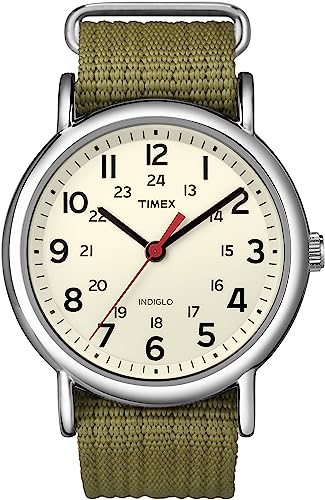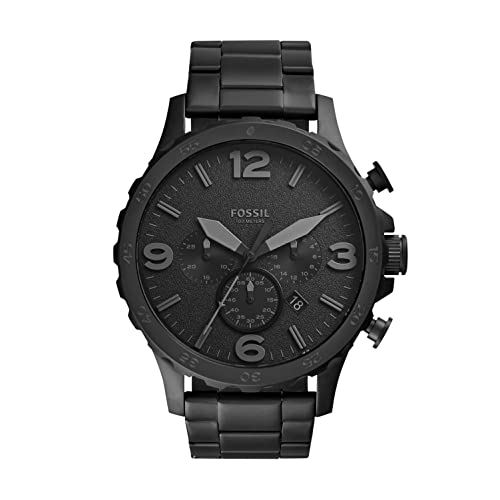This step-by-step guide provides simple instructions to help you set the time on a digital-analog watch. It is a quick reference for anyone who may need assistance in adjusting the time on their watch.
Top selling hybrid timepieces
Identify the watch mode
To identify the watch mode on your digital-analog watch, first, check if it has different modes such as time, stopwatch, or alarm. Next, ensure that you are in the time mode to be able to set the correct time. This can usually be done by pressing a specific button or combination of buttons on the watch.
Locate the time-setting button
To locate the time-setting button, inspect your watch for a button dedicated to adjusting the time. Look for a button labeled ‘Time’ or with a clock icon. For example, on some watches, the time-setting button is located on the right side of the watch face, near the 3 o’clock position. On others, it may be positioned on the left side, near the 9 o’clock position. Examine your watch carefully to find the appropriately labeled button.
Press and hold the time-setting button
Hold down the time-setting button firmly, without releasing it, until the watch enters the time-setting mode. In this mode, you will be able to adjust the hour, minute, and sometimes the second. Ensure you maintain the button pressed until the watch displays the time-setting mode.
Set the hour
- Enter the time-setting mode on your watch.
- Use the up or down buttons to adjust the hour according to your desired time.
- Take note of whether your watch uses a 12-hour or 24-hour format and set the hour accordingly.
- Ensure that the time is set accurately before exiting the time-setting mode.
Set the minute
Adjust the minute by using the up or down buttons. Ensure that the minutes are set accurately by carefully selecting the desired time.
Set the second (optional)
- If your watch has the option to set the second, locate the up or down buttons on your watch.
- Use the up button to increase the second or the down button to decrease it.
- Adjust the second until it aligns with a reliable time source, such as a clock or your phone.
- Keep in mind that setting the second is optional, as many watches automatically sync the seconds for you.
Confirm and save the time
To confirm and save the time, press the time-setting button again after setting the desired time.
Exit the time-setting mode
To exit the time-setting mode on your watch, simply press the separate button specifically designated for this purpose. If your watch doesn’t have a dedicated exit button, don’t worry. Just wait patiently for a few seconds, and the watch will automatically exit the mode on its own. Ensure that you follow these instructions carefully to successfully exit the time-setting mode on your watch.
Verify the time
Verify the time
- Check the time displayed on your digital-analog watch to ensure it accurately corresponds with the current time.
- If the time is incorrect, repeat the steps required to set the time correctly on your device.
- Ensure that the time is properly synchronized with the correct time zone and current time.
- Refer to the watch’s user manual if necessary for detailed instructions on setting the time accurately.
- Remember to repeat this process periodically, especially after time changes due to daylight saving time or when traveling across different time zones, to ensure your watch always displays the correct time.
Wrap it up
In conclusion, mastering the art of setting the time on a digital-analog watch can save you from the inconvenience of wearing an incorrect timepiece. With just a few simple steps, you can confidently keep your watch ticking in sync with the world around you.
Time Setting Techniques
Step-by-Step Guide: How to Adjust the Time on a G-Shock Watch (Analog-Digital) [4k]
Step-by-step guide to effectively utilize digital-analog watches
- Familiarize yourself with the basic functions: Start by understanding the layout and buttons of your digital-analog watch. Look for features such as date, time, stopwatch, and alarm settings
- Set the time: Most digital-analog watches have a time-setting mode. Press and hold the designated button until the numbers start to blink, then use the appropriate buttons to adjust the hours, minutes, and seconds. Press another button to confirm
- Use the digital features: Digital-analog watches often include additional features such as a stopwatch or timer. Read the instruction manual to learn how to access and navigate these functions. Practice using them to familiarize yourself with their operation
- Understand the analog display: While the digital part of your watch may display precise time, the analog hands offer a traditional timekeeping feel. Pay attention to the position of the hands to read the approximate time. Keep in mind that the analog display may require occasional adjustment to match the digital display precisely
- Customize additional settings: Explore any extra settings that your digital-analog watch might offer. This could include setting alarms, adjusting the backlight, changing the time format, or choosing between different languages. Consult the user manual to learn how to personalize these features
Frequently Asked Questions about Digital-Analog Watches
Is it possible to set multiple time zones on a digital-analog watch?
Yes, it is possible to set multiple time zones on a digital-analog watch. Some watches come with features that allow you to display and track time in multiple zones simultaneously. These watches usually have additional dials or digital displays that can be set to different time zones. By adjusting the settings, you can set the main analog display to your local time, while the other displays show the times of different cities or time zones around the world. This feature is particularly useful for frequent travelers or individuals who need to keep track of time in different parts of the world.
Are digital-analog watches powered by batteries or do they need to be manually wound?
Digital-analog watches are powered by batteries rather than needing to be manually wound. These watches use a small battery to provide power to the quartz movement, which synchronizes the timekeeping function. The battery supplies the necessary energy to operate the electrical components of the watch, such as the digital display and any additional features like alarms or backlighting. The battery life can vary depending on the watch’s brand, quality, and usage, but it usually lasts for months or even years before needing replacement.
Do digital-analog watches require regular maintenance or servicing?
Digital-analog watches do not require regular maintenance or servicing as they are typically powered by a quartz movement. These watches are battery-operated and accurate, which means they do not rely on intricate mechanical parts that require constant upkeep. However, it is recommended to change the battery every couple of years to ensure the watch’s optimal performance. Additionally, regular cleaning and occasional inspections by a professional may be beneficial for maintaining the watch’s appearance and functionality.
How does a digital-analog watch combine both types of displays?
A digital-analog watch combines both types of displays by incorporating two separate display mechanisms within the same device. On the face of the watch, there is typically an analog display, which consists of traditional hour and minute hands along with hour markers. This analog display represents time in a more traditional and visually intuitive manner.
Additionally, the watch features a digital display, usually positioned within the analog one. The digital display employs LED or LCD technology to present the time in a numerical format, often including additional features such as the date, alarm clock, or stopwatch functionality. This digital display provides precise and easy-to-read time information, especially in situations where a quick glance is required.
The combination of both digital and analog displays allows users to choose their preferred method of time representation according to their needs and personal taste. This hybrid design enables the watch to offer a practical balance between traditional analog aesthetics and the convenience of modern digital functionality.
What materials are commonly used for the casing of digital-analog watches?
The casing of digital-analog watches is commonly made from a variety of materials. Stainless steel is a popular choice due to its durability and sleek appearance. Titanium is another commonly used material for its lightweight and corrosion-resistant properties. Plastic is frequently used for sporty or casual watches, as it is lightweight and less expensive. Additionally, some higher-end watches may feature casings made from luxury materials such as gold, silver, or ceramic.
What are some popular designs or styles of digital-analog watches on the market today?
There are several popular designs and styles of digital-analog watches on the market today. Some of these include:
- Retro-inspired Watches: These watches combine the classic analog dial with digital features, such as a digital display for time, date, and other functions. They often have a vintage or nostalgic aesthetic.
- Sports Watches: Designed with active individuals in mind, these watches usually feature robust and durable materials, such as stainless steel or titanium. They often include digital displays for functions like chronographs, heart rate monitors, and GPS tracking.
- Hybrid Watches: These watches merge the traditional analog watch face with smartwatch capabilities. They typically have a small digital display integrated into the dial, allowing users to receive notifications, track fitness, and control smartphone features.
- Minimalist Watches: These watches emphasize simplicity, featuring clean lines and a minimalist dial design. They often have an analog face but may incorporate digital elements discreetly, such as a digital date display or a small digital complication.
- Luxury Hybrid Watches: Combining the elegance of luxury watches with smart features, these timepieces cater to consumers looking for both style and advanced technology. They may include digital functions like smartphone connectivity, fitness tracking, and notifications, while maintaining a sophisticated design.












